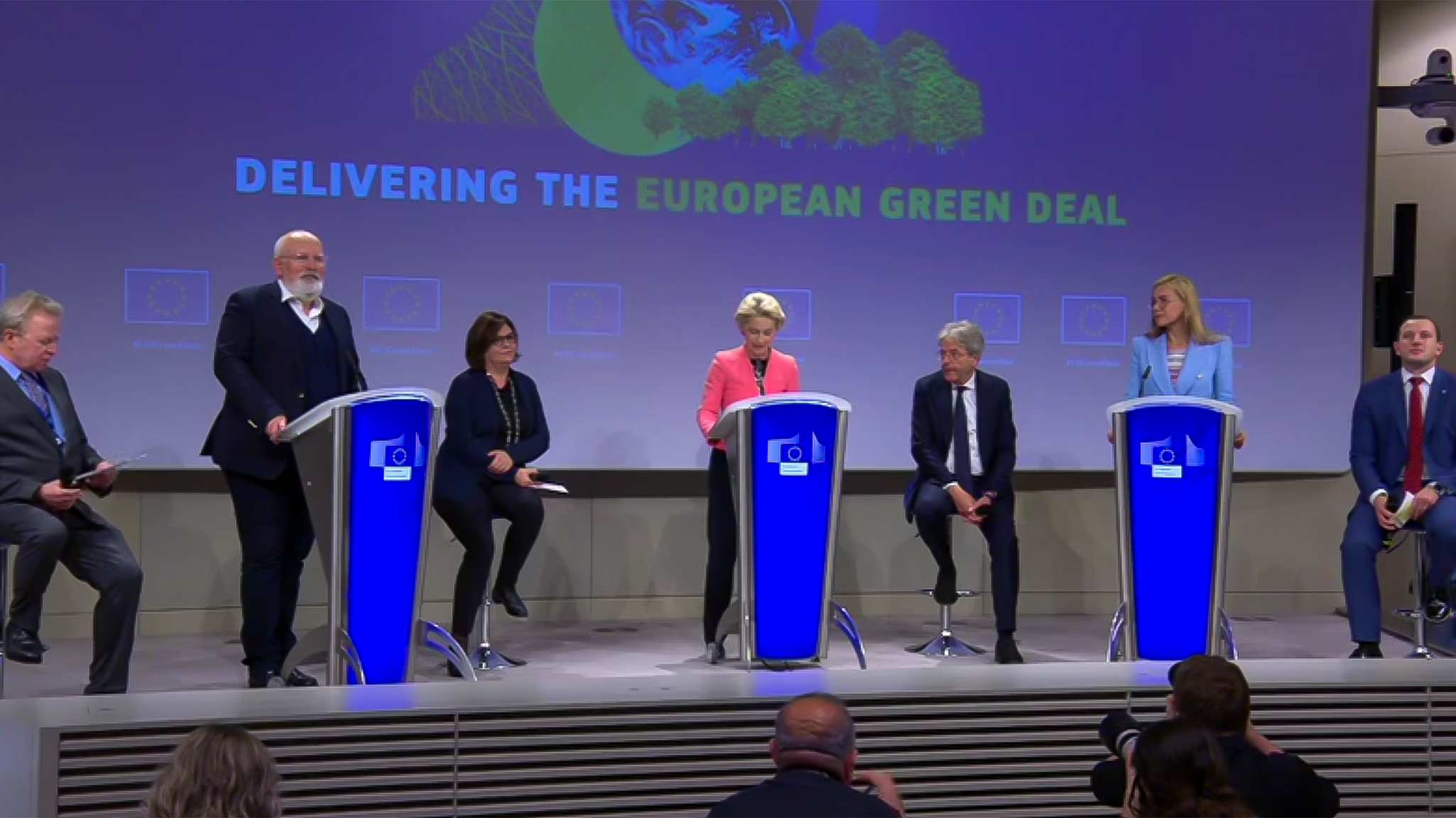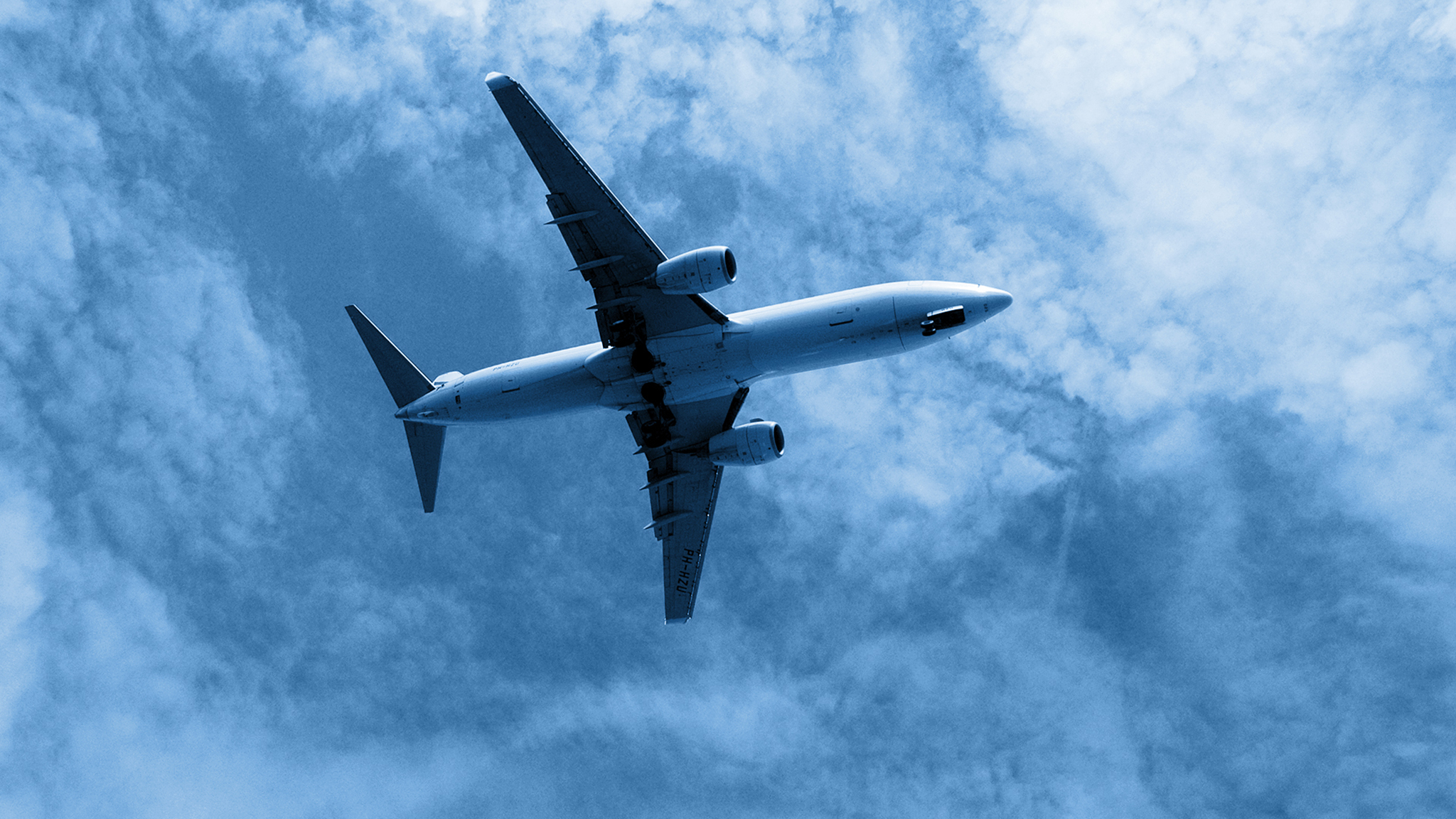Back to the beginning: the Green Deal and the Climate Act
A short recap before we delve into the details. Not long after the Commission was appointed in 2019, it presented the European Green Deal, aiming to make Europe climate-neutral by 2050. That goal was then laid down in law in the European Climate Act, which was passed earlier this year. In addition to the agreement to reach net zero CO2 emissions in 2050, it also contains the goal of reducing emissions by 2030. European CO2 emissions must then be 55% lower than in 1990.
Fit for 55
The name of the package that was presented last week is clearly a reference to the 55% reduction target. The package contains 13 (!) proposals – taking up 4000 pages in total – that are designed to help avert the climate crisis and keep our planet habitable. Several of those plans affect the aerospace industry, either directly or indirectly. They are the tightening of the European emissions trading system ETS, a revision of the Energy Taxation Directive (ETD) and Renewable Energy Directive (RED) and the ReFuelEU Aviation initiative.
Energy Taxation Directive: tax on fossil kerosene
As mentioned in my earlier blog post, the ETD introduces a kerosene tax on intra-European flights. It is debatable whether a tax will help improve sustainability. If the tax proceeds end up in the treasury coffers and are then used for all sorts of things, the direct relationship is missing. Earmarking some or all of the proceeds for investment in sustainable aviation would be more likely to have that effect, but that is not what is being proposed.
What can help is the tax break for Sustainable Aviation Fuel (SAF) that applies until 2033. That reduces the price difference between fossil kerosene and SAF, making it financially more attractive to fill up with SAF. And the larger the share of SAF, the lower the (net) CO2 emissions.
ReFuelEU Aviation: an obligation to blend in sustainable aviation fuels
As the name ReFuelEU Aviation suggests, this initiative is specifically for the aviation industry¹. It imposes an obligation on fuel suppliers to blend in SAF. That means airline companies automatically fill up with a certain percentage of SAF every time they refuel. The lifecycle emissions of SAF are substantially lower than those of fossil kerosene, so using SAF leads to lower (net) CO2 emissions. What is more, SAF helps limit the non-CO2 climate impact of aviation. The blending obligation applies to both intra-European flights and intercontinental flights departing from Europe, which means it has the widest scope of the proposals discussed here. The mandatory blend proportion starts at 2% in 2025 and increases to 5% in 2030. After that, it goes up every five years, eventually reaching 63% in 2050. From 2030 onwards, a proportion of the SAF must be synthetic kerosene, namely kerosene made from green hydrogen and CO2 taken from the air.
Introducting an obligation to blend in SAF was one of the recommendations in Destination 2050 – a sustainability plan that NLR and SEO drew up at the behest of the European aviation industry. The reason for making this recommendation was that such a blend-in obligation helps scale up production of SAF. If producers know for certain there will be a market, that reduces the risk for them of investing in new factories. Put simply, it resolves the chicken-and-egg problem.
The blend percentages proposed for 2030 and 2050 are also in line with what we considered feasible in Destination 2050: 6% in 2030 and 66% in 2050. However, the proportion of synthetic kerosene that ReFuelEU Aviation is stipulating for 2050 is lower, at 28%, than our prognosis of 39%. But the very fact that there is a sub-target for ‘synfuel’ is good to see. That reduces the risk of all attention being focused on biofuels, which are more limited in terms of the raw materials than synthetic kerosene. What is less positive in my view is the decision to make the obligation for 2030 apply per flight. That means it will not be possible to fill up with 12% SAF on the outward journey and 0% on the return journey, even though that averages out at the mandatory 6% that will apply in 2030. The consequence is that the same volume of SAF will have to be divided up among more airports, which could result in higher emissions and higher costs for logistics. Averaging out is permitted in the period to 2030.
Another important proposal concerns the practice of ‘tankering’, where aircraft fill up with more fuel than they need for their next flight. There are many possible reasons for doing this, one of which is financial. Fuel prices differ between airports and an airline can save money by filling up with more kerosene where the fuel is cheaper. (That is precisely what many Dutch holidaymakers do when they decide to drive to the south of France via Luxembourg, for instance.) The proposal imposes limits on that practice. Each year, airline companies have to report how much fuel they took up per airport and how much fuel they used for the flights that departed from that airport. The used fuel must constitute at least 90% of the fuel they filled up with. The idea behind this limitation is to prevent airline companies from filling up more at airports that are not subject to the obligation to blend in SAF, which would undermine that initiative. Logically, this anti-tankering proposal also reduces the risk of companies avoiding the above-mentioned kerosene tax.
Renewable Energy Directive: a more ambitious target for renewable energy
Related to the blending obligation is the question of what actually counts as SAF. That will be determined in the Renewable Energy Directive (RED). The directive already does this, in fact, but some changes are being proposed:
- The general target for the share of renewable energy by 2030 will increase from 32% to 40%.
- The use of renewable energy in the transport sector is required to lead to a reduction in greenhouse gas intensity of at least 13% by 2030. That goal was formulated differently before.
- A comparable difference is seen in the targets for the use of Annex IX raw materials in the production of biofuels. Moreover, a target for fuels on a non-biological basis has been added (applicable from 2030).
EU ETS: accelerated reduction in emission allowances
Then, last but definitely not least, there is the EU ETS. That system stipulates that all the parties subject to the ETS must produce evidence of an emission allowance for each ton of emissions. Because the number of available emission allowances is being reduced, total emissions are also decreasing. The ETS was initially supposed to regulate emissions from all flights departing from Europe but at present its scope is limited to intra-European flights².
First of all, the free emission allowances currently granted to the aviation sector will soon come to an end and as of 2027 airline companies will have to purchase their emission allowances. In addition, the linear reduction factor – the percentage by which the total number of emission allowances decreases each year – is being raised from 2.2% to 4.2%. These two changes will make the number of available emission allowances smaller and is expected to push up their price – to €90 per ton in 2030 according to some analysts. It should be said that prices were already rising fast before the announcement of the ‘Fit for 55’ package. In Destination 2050, we assumed a price of €60 per ton in 2030, but prices are already above €50 per ton.
The exact impact on aviation’s sustainability efforts will depend in part on what happens with prices. In general, however, putting a price on emissions will make investments in the reduction of such emissions – for example, with new aircraft – more attractive. Furthermore, most of the proceeds from the ETS are used to tackle climate change.
Finally, the Commission has made a proposal on how to combine the EU ETS and CORSIA. CORSIA is the global Carbon Offsetting and Reduction Scheme for International Aviation. In the current situation, emissions from intra-European flights would be assigned two prices, one under the EU ETS regime and one under the CORSIA regime – after all, intra-European flights are also international flights. The proposal now is to only apply CORSIA to flights operated by European airline companies from and to destinations outside the European Economic Area and to assign a price on intra-European flights through the EU ETS. I see this as a sensible move: it avoids duplicate pricing and makes sure Europe’s ambitions can be maintained as much as possible.
What now?
In my view, the Commission has (broadly speaking) presented a package of measures that will help make European aviation more sustainable. There may be an opportunity to improve or refine the proposals in the next while, when the European Parliament and the Council of Europe consider them. Industry players have already made clear their opposition to the kerosene tax, so that will certainly be the subject of debate. Whether any changes will be made to that measure or any other elements of the package remains to be seen. After all, the target of a 55% reduction in emissions by 2030 compared with 1990 is fixed and as the Green Deal chief Frans Timmermans pointed out, every measure that is ditched will have to be replaced with another measure somewhere else. To be continued!
¹ Incidentally, a similar proposal has been made for the maritime sector.
² Officially, flights within the European Economic Area and flights to Switzerland and the United Kingdom.



